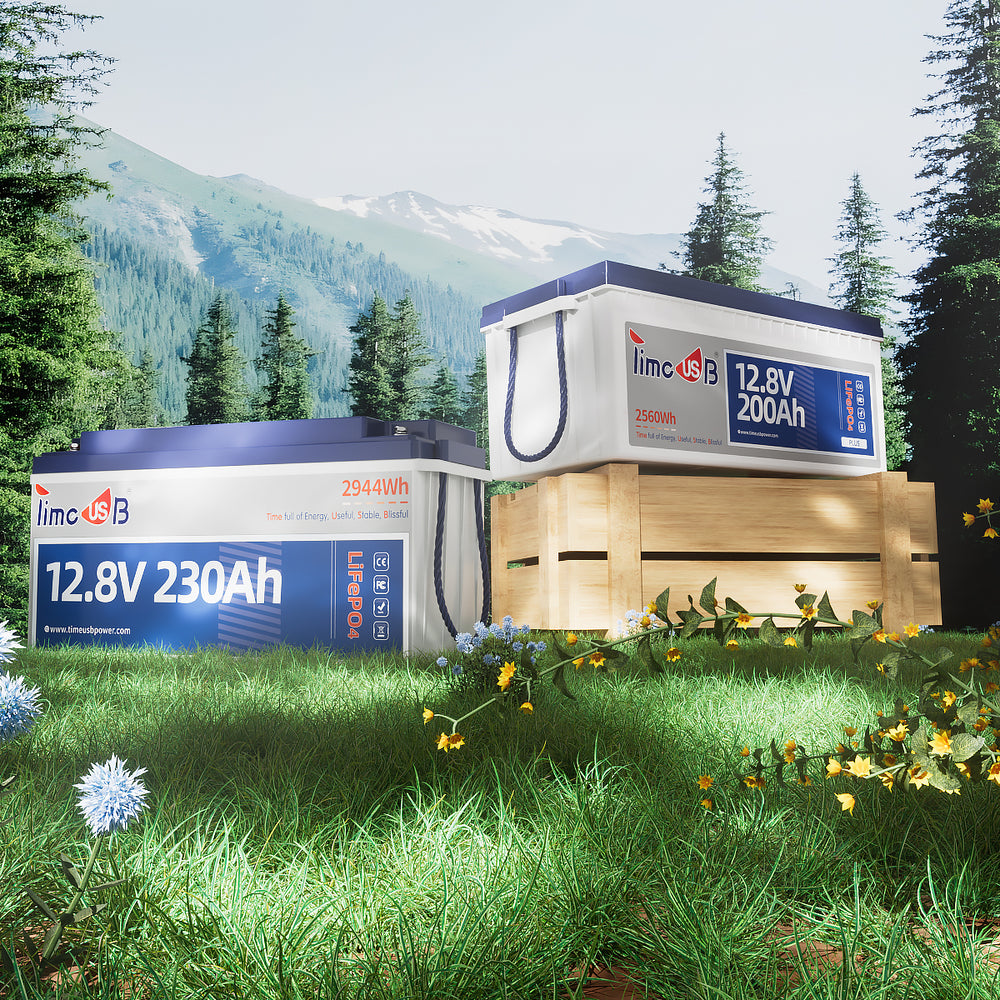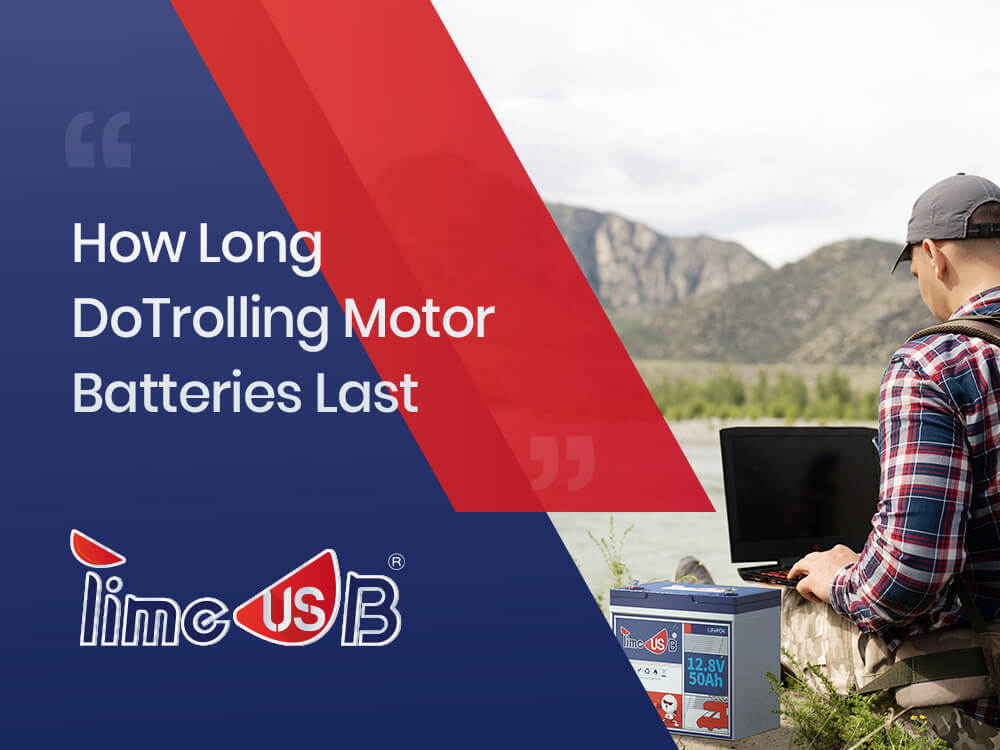Powering Up: A Guide to Installing Lithium Batteries

If you're looking for a reliable, long-lasting power source, lithium batteries are your go-to. Capable of powering up both on-grid and off-grid systems, they provide a dependable source of power no matter your setup. And while installation may seem intimidating at first, the process is actually quite straightforward—all you need is the right know-how.
In this article, we'll teach you how to install lithium batteries in off-grid systems. We'll cover everything from choosing the right type of battery to properly connecting to the electrical grid. So, if you're ready to get started on your own off-grid setup, this guide will help make sure you do it safely and correctly. Let's start powering up!
Timeusb 12V 200Ah Plus Lithium Battery
Understanding the Basics of Off-Grid Systems
Most of us rely on a grid, either municipal or private, for our electricity. But for some, it's just not feasible, whether due to location or power needs. And that's where off-grid systems come in.
An off-grid system is a combination of renewable energy sources, such as solar and wind, along with traditional fossil fuel generators and effective energy storage solutions—which can include lithium batteries. Together they provide reliable and cost-effective power to homes and businesses that are not connected to a main grid source of electricity.
By understanding how your off-grid system works and its power requirements, you can choose the right combination of energy sources and components—like lithium batteries—and create an energy storage solution tailored to your specific needs.
From there, you'll be ready to set up your off-grid system with lithium batteries equipped to power up your home or business!
Comparing Lead Acid and Lithium Batteries
Having decided to switch to a lithium-based battery system, you now need to take a look at what makes them different from lead acid batteries. The most obvious difference is the size. Lithium batteries pack more power into a smaller space, allowing off-grid systems to become more compact and efficient.
Lithium batteries tend to last longer than lead acid batteries, too—up to twice as long. That's because they don't self-discharge like lead acid batteries do; in other words, their energy isn't wasted even when the system isn't running. Plus, they're less affected by extreme temperatures and require less maintenance overall.
And finally there's price: lithium battery systems cost more than lead acid systems up front, but their higher efficiency and longer lifespan mean you'll save money in the long run. So if you're looking for an energy storage solution that gives you reliable performance and great value for money, lithium is definitely the way to go!
Estimating System Requirements for Lithium Batteries
Now that you've familiarized yourself with lithium batteries and the differences between them, it's time to estimate your system requirements. To do this, the first step is to calculate your daily energy consumption of your off-grid system and compare it with the rated capacity of the battery.
Fortunately, there are a few simple calculations that can help you figure out your daily usage. First, you need to estimate how many amp-hours per day you will use. This will depend on what type of uses you need like lighting, cooking and other appliances. Then, multiply that number by the voltage of your system (usually 12 or 24 volts) to calculate watts per day.
Once you know how many watts per day your system requires, you can determine how many batteries are necessary to meet this energy requirement. By multiplying the number of watts per day by 4 (to get the number of amp-hours per day) and then dividing by the amp-hour capacity rating of your batteries, you'll know how many batteries are required for installation.
For example:
A 12-volt system using 600 watt-hours would require 600 watt/12 volts = 50 amps per day
50 amps x 4 hours = 200 amps/day
200 amps/day ÷ 100 AH battery = 2 batteries
Installation Considerations for Lithium Batteries
When it comes to installation, there are a few key things you should keep in mind when using lithium batteries in an off-grid system.
LiFePO4 vs Li-ion
When considering lithium technology, two primary types are available: LiFePO4 (Lithium Iron Phosphate) and Li-ion (Lithium Ion). Typically, LiFePO4 batteries have higher power densities and more cycle life than Li-ion batteries. But they can also come with a higher cost. So if you’re looking for power, longevity and budget-friendliness, LiFePO4 is the way to go.
System Integration
Keep system integration in mind when choosing lithium batteries for your off-grid system. Lithium batteries behave differently than other types of chemistries—they maintain their voltage range longer into their discharge cycle, so that means you need to work with matched components to ensure reliable performance at every stage of the battery's life. Plus, consider how you will monitor your lithium battery bank: monitoring it on a regular basis can help maximize its performance and life span.
Balance of System Components
Think about balance of system components when installing your lithium batteries–this could entail items like mounting hardware, fuse holders and connectors that manage current levels during discharge and recharging cycles. Ensure you purchase components that are designed to support the type of battery chemistry you’ve chosen so that your system runs safely and efficiently over its lifetime.
Testing, Troubleshooting Maintenance for Off-Grid Systems
When you're powering up an off-grid system with lithium batteries, it's important to test, troubleshoot and maintain your installation correctly.
Testing
Before you seal the enclosure, it's essential to check that your system is working as intended. This includes testing the electrical connections, verifying that all the elements of the system are in balance, and running a full-discharge test. This final step is especially important for making sure that the battery will provide enough power for your needs.
Troubleshooting
If you're having problems with your system or if something suddenly stops working after installation, you'll need to troubleshoot to identify the source of the issue. Start by testing each component of the system and compare it against its specifications – this should help you pinpoint any discrepancies in performance that could possibly be causing a malfunction.
Maintenance
A well maintained off-grid energy system can last for years and provide reliable power for whatever lifestyle you choose. In order to keep things running smoothly, it's important to monitor performance on a regular basis and perform preventive maintenance as needed – replacing parts like connectors as needed, doing periodic full discharge tests and conducting inspections periodically are all key components of keeping things running optimally.
Benefits Drawbacks of Lithium Batteries
You may have heard that lithium batteries tend to be the most efficient when it comes to off-grid systems—but they also come with some drawbacks. It's important to understand the benefits as well as the negatives before you make a decision to use Li-ion batteries in your system.
Benefits of Lithium Batteries:
-
High energy density: This means you can get more power from a smaller battery; and lithium batteries can last for thousands of charge cycles.
-
Light weight: Since these batteries are much lighter than their lead-acid counterparts, installation is easy and transport is a breeze.
-
Long shelf life: Even if you don't use your battery for long periods, it will still retain its capacity for up to 10 years, making lithium an ideal choice for off-grid systems.
-
Low maintenance costs: Lead-acid batteries need frequent refreshing, but with Li-ion, you just need to keep charging them up—and no additional maintenance is needed.
Drawbacks of Lithium Batteries:
-
Expensive upfront cost: Lead acid batteries offer better value in terms of dollars-per-storage capacity; however, since they’re more costly upfront, lithium batteries offer better overall value in the long run since they last longer and require less maintenance over time.
-
High voltage: If an installation isn't done correctly, high voltage can be dangerous; and additional safety measures have to be put in place when setting up Li-ion systems to prevent electrocution or fire hazard risks.
Conclusion
Installing a Lithium battery is a great way to take your off-grid system to the next level. But before you start, you need to make sure that you are properly prepared. From protecting the battery from extreme temperatures to finding the right charger, there's a lot to consider before you make the switch.
Once you've taken the necessary steps, though, you can be confident that you've made the right choice. By switching to a Lithium battery, you'll be using a superior technology that can help you get the most out of your off-grid system.
So don’t be afraid to take the leap, and start powering up with a Lithium battery. With the right preparation and knowledge, it's a surefire way to boost your off-grid energy performance.


![[Full Guide] The Comprehensive Guide to LiFePO4 Battery Life](http://www.timeusbpower.com/cdn/shop/articles/The_Comprehensive_Guide_to_LiFePO4_Battery_Life_757d2749-9468-4739-ac83-0960c27749b0.jpg?v=1722918256&width=1080)
